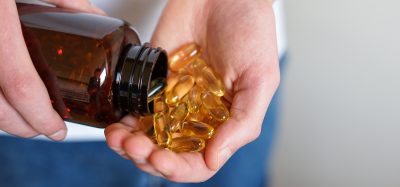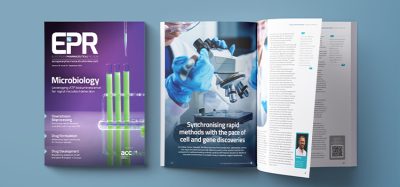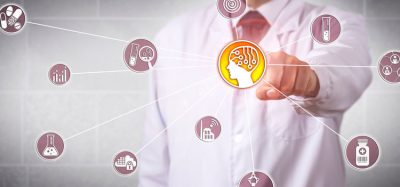PAT: not a purpose in itself
The process analytical technology guidelines have been a hotly debated topic within the pharmaceutical industry ever since they were made public in 2004. This also holds true at Johnson & Johnson Pharmaceutical Research & Development (J&JPRD), Division of Janssen Pharmaceutical N.V. In recent years, the company has introduced PAT tools in its manufacturing operations and in its development organisation on a project-by-project basis. Several of these projects have resulted in a better insight into critical manufacturing processes and have led to significant optimisations.
The process analytical technology guidelines have been a hotly debated topic within the pharmaceutical industry ever since they were made public in 2004. This also holds true at Johnson & Johnson Pharmaceutical Research & Development (J&JPRD), Division of Janssen Pharmaceutical N.V. In recent years, the company has introduced PAT tools in its manufacturing operations and in its development organisation on a project-by-project basis. Several of these projects have resulted in a better insight into critical manufacturing processes and have led to significant optimisations.
The process analytical technology guidelines have been a hotly debated topic within the pharmaceutical industry ever since they were made public in 2004. This also holds true at Johnson & Johnson Pharmaceutical Research & Development (J&JPRD), Division of Janssen Pharmaceutical N.V. In recent years, the company has introduced PAT tools in its manufacturing operations and in its development organisation on a project-by-project basis. Several of these projects have resulted in a better insight into critical manufacturing processes and have led to significant optimisations.
Despite these promising results, the company feels a more sector specific approach will be needed to ensure optimal integration of the PAT principles. “Constant monitoring, adjusting, and optimising of manufacturing processes – the very essence of PAT – is not always that obvious in a strongly regulated environment. That is why the implementation strategies that have been successful in other industries do not necessarily apply for the pharmaceutical industry,” says Peter Van Broeck, Senior Director New Product Introductions at Johnson & Johnson.
European Pharmaceutical Review recently brought together four PAT specialists from different departments within Johnson & Johnson. Each of them has their own particular experience with the use and implementation of PAT tools. An interesting conversation on the current view of PAT within Johnson & Johnson ensued.
PAT: a means to gain insight into critical processes
“I am convinced the use of PAT tools can bring many benefits to the pharmaceutical industry,” says Peter Van Broeck, opening the discussion. “The PAT projects we have realised in recent years have proven that, I dare say we have already learned a great deal. PAT has given us a greatly improved insight into our processes, which has enabled us to optimise specific issues within manufacturing.”
Mario Hellings, Scientist for Analytical Development, can certainly confirm this. He is currently working on a project that will optimise cleaning and the validation of cleaning processes throughout the company. “Until recently, our cleaning processes were mainly upgraded historical processes without an integrated scientific approach and this resulted in time-consuming and expensive cleaning procedures,” explained Mario Hellings. By using UV in-line monitoring, all the critical parameters of the cleaning process i.e. temperature, spray solution, holding times, pump pressure, spray-ball efficiency, etc, were systematically mapped and measured. The data provided an enhanced understanding and better control of the processes, leading to many opportunities for improvement and cycle time reductions. Mario Hellings states that the project has enabled the Chemical Development Department at the Beerse site to reduce cleaning times by more than 40%. The amount of solvent has also been reduced by more than 40%. “The improvements have led to enhanced control of the cleaning process, better environmental performance and immediate cost savings. Since the methodology we developed for this project is easily transferable to our other cleaning installations, we are now planning to implement it throughout Johnson & Johnson.”
A project-by-project approach
“This project is certainly a good example of how we want to use PAT within Johnson & Johnson,” confirms Peter Van Broeck. “We do not see PAT as a purpose in and of itself, but rather as a means to gain better knowledge of very specific manufacturing issues and then using that knowledge to set up optimisation projects to improve quality and safety, realise time savings and cost efficiencies.” Johnson & Johnson is now looking for other manufacturing areas where PAT can help them gain insight and improve their manufacturing processes. But the company wants to determine beforehand if there is any added value for each project. “It does not make sense to start measuring processes just for the sake of joining the PAT hype. You need to know exactly what you are looking for,” observes Mario Hellings. “I think this is also the reason why the many large-scale PAT implementation projects we have seen in our industry have failed to deliver the results they had hoped for.”
Enabling Quality by Design during development
Using PAT tools has proven to be especially beneficial within the development area. “Traditionally, pharmaceutical companies have had much more knowledge and expertise in research and development than in the actual manufacturing processes, where we have to produce within fixed process ranges,” maintains Peter Van Broeck. “Using PAT tools has helped us to deepen our knowledge of our manufacturing processes and optimise them in the development stage.” The same tools are also used at a later stage to guide the transfer from the miniaturised laboratory situation to the actual full-scale production.
“In one case, the use of PAT tools has enabled us to reduce the drying process for an API from 72 hours to 48 hours,” explains Tom Van den Kerkhof, Senior Scientist in Analytical Development. “This not only resulted in a more uniform product quality, but also effectively increased plant capacity by a considerable margin”. We have accomplished this by measuring the amount of solvent present in the exhaust gases of the installation. The data we acquired has greatly enhanced our insight into the many variables of the drying process and has enabled us to drastically change and better the process. Because we take our measurements in the exhaust gases, we do not intrude into the drying installation itself and we do not touch quality critical parameters, so no changes occur that require regulatory notification. In a second phase, we hope to reduce the drying time even further during full-scale manufacturing. We may even introduce a variable drying time, although this could make it more difficult to plan the process accurately.”
A similar project tackled a particular crystallisation process in the same way. “The development of these processes is a time-consuming activity, but it is crucial for the chemical and physical qualities of the final API,” states Koen De Smet, Senior Engineer in Chemical Process Technology. “By using infrared, turbidity and an automated laboratory reactor, we were able to steer the temperature of the crystallisation process by measuring concentrations online. This knowledge led to a more robust crystallisation process and a higher, more constant crystal quality. It will also enable us to reduce the time needed to determine the exact cooling curve and crystallisation procedures for future products.”
Peter Van Broeck notes that “Both these projects clearly illustrate that PAT tools can effectively help us solve specific manufacturing issues and optimise our processes from within the development organisation.”
PAT strategies from other industries do not always apply
However, implementing these PAT tools in manufacturing on a permanent basis has proven to be less obvious. “One of the main challenges is: what can we possibly do with the vast amount of data generated by the PAT tools?”, explains Koen De Smet. “We can not use the data to adjust or optimise fixed manufacturing processes without filing the changes with regulatory authorities, this is time-consuming and expensive. We would also have to store and manage the data for decades, as required by current regulations.”
Peter Van Broeck feels the PAT guidelines, as they were issued by the FDA and EMEA in many ways still conflict with the strongly regulated environment that all pharmaceutical companies work in. “Regulatory authorities have clearly taken inspiration from the manufacturing practices in other industries, such as the food, petrochemical, and automotive industry. PAT implies real-time measurements and follow up of manufacturing processes, and continuous adjustments. This makes perfect sense in the food industry, where raw materials can vary significantly within a very short time. PAT for them is the only way to achieve consistent quality of the end product. This is also the reason why they implemented the necessary tools years ago.”
Peter Van Broeck continues. “Coming from a different background myself – I worked in the food industry for some years before I joined Johnson & Johnson – so I can appreciate why regulatory authorities would like the pharmaceutical industry to adopt the very same principles that have brought so many benefits to these other sectors. But the truth is that the pharmaceutical industry traditionally works in a very different way.”
At the end of the development phase, products, their specifications, and the way they will be manufactured are registered with regulatory authorities. From that moment on, the company is bound by the specifications in this file. In many cases, changing these specifications requires setting up an entirely new filing procedure with regulatory authorities in different countries around the globe for what is essentially the same exact product. “That is why pharmaceutical companies are very reluctant to change manufacturing processes after they have already been approved by regulatory authorities,” says Tom Van den Kerkhof. “We tend to lay out the manufacturing process in detail during development and rely on laboratory testing to ensure quality and safety of the end product. Constant monitoring, adjusting and optimising of manufacturing processes does not always make sense in this type of environment.”
Towards a better integration of PAT
So what will the future bring? All four participants in the discussion agree that a different approach is necessary for a better integration of PAT within the pharmaceutical industry.
“Our projects have proven that the introduction of PAT tools, when they are used appropriately, can lead to significant quality and safety enhancements,” comments Peter Van Broeck. “If we want to further integrate these principles into our processes, a different approach will be needed, one that is more adapted to the needs and the very specific issues of the pharmaceutical industry. I hope we will see a shift in the mindset of both pharmaceutical companies and regulatory authorities all over the world. Closer collaboration and consultation on future guidelines will certainly make both parties aware of the many challenges and possibilities. We have already begun to witness this in several countries, which is certainly encouraging.”
PAT as an enabler for Quality by Design
“The introduction of PAT is part of a bigger movement within the pharmaceutical industry towards Quality by Design,” says Peter Van Broeck.
The shift will have a major impact on the validation of quality and safety of the end product, the registration of manufacturing processes and procedures, also on the collaboration between development and operations.
“By definition, Quality by Design implies that you base your decisions on a thorough understanding of products, processes and materials, and that you also know exactly how these factors impact quality, safety and efficiency,” explains Peter Van Broeck. “However, this is not the way the pharmaceutical industry has traditionally functioned when it comes to manufacturing processes.”
From testing quality in end products…
At the time of registration, pharmaceutical companies have typically produced six batches of the new product: three registration batches and three validation batches. That means relatively little is known about the actual manufacturing process, other than it has provided a sufficient degree of quality and safety. Since the quality of the end product is validated by QC testing, there is no need for further fine tuning or to acquire more knowledge about the process. The process is then filed with regulatory authorities and remains unchanged until the product lifecycle comes to an end.
…to building it in by design
Quality by Design takes a totally different approach. Quality and safety are not only guaranteed by testing, but also by ensuring that each parameter of the process is designed to guarantee a particular level of quality and safety. It announces the definitive move from the traditional ‘art’ of pharmaceutical development, to the idea of pharmaceutical sciences and engineering.
Towards a variable design space
This new way of thinking will have a considerable impact on several fronts. “We will evolve from a registered and fixed manufacturing process to a variable design space,” says Peter Van Broeck. “A proven acceptable area within which we can guarantee quality and safety of the end product, based on a thorough knowledge of material properties, process conditions, environmental factors, etc, will allow the companies to move within that space, without the need for prior approval or additional testing.”
Tearing down walls between development and operations
Quality by Design will also redefine the collaboration between Research & Development and the Operations departments. “It requires much more knowledge sharing and feedback loops between the two departments than we have today. Research & Development will typically set the qualitative framework for the manufacturing process, while Operations will further optimise this framework during production, based on quantitative measurements. Feedback loops between the two departments will lead to continuous improvements and optimisations,” concludes Peter Van Broeck.
Tom Van den Kerkhof
Tom Van den Kerkhof after obtaining his PhD at the University of Antwerp in 2002, started working for Johnson & Johnson Pharmaceutical Research and Development in the Analytical Development Department. After introducing NIR spectroscopy in the laboratory for the release of clinical trial samples, he soon became responsible for implementing process analytical tools. In the analytical tools field, he has much experience in optical (UV, IR, NIR, Raman) and mass spectroscopy. Currently, he is implementing PAT projects such as reaction monitoring, blending and drying.
Peter Van Broeck
Peter Van Broeck received his Ph.D in Science in 1992 (Chemistry, Organic synthesis) at the University of Leuven, Belgium. He started his professional career in 1992 as Head of the Organic Analytical Laboratory in an industrial water treatment company (Betz Europe) in Haasrode, Leuven. In 1996, he joined Tate and Lyle (Amylum) in Aalst (Belgium) where he started in Research and Development, he moved after two years to New Product Development and New Product Introduction in the industrial starch group. In 2002 he joined J&J Pharmaceutical R&D in Beerse (Belgium) in Chemical Development as Head of the Chemical Process Control Laboratory, by the end of the year he also became responsible for the PAT initiative within J&J ChemPharm. By the end of 2006 Peter took new responsibilities as Senior Director New Product Introduction within World Wide Chemical Operations.monitoring, blending and drying.
Mario Hellings
Mario Hellings is currently working as a Scientist in Analytical Development. He holds a Master degree in Biochemistry and completed his PhD at the University of Leuven. Mario received his doctor’s degree in 2004, and subsequently started working for Johnson & Johnson in the Department of Analytical Development, where he was responsible for implementing process analytical tools. In 2005 he additionally became responsible for the scientific support of the cleaning validation group. Currently Mario supports PAT projects for chemical as well as pharmaceutical development.
Koen De Smet
Koen De Smet gained a degree in Bio-engineering in Applied Chemistry in 1998 and began his PhD at the University of Louvain. In 2003 he received his doctor’s degree in Applied Chemistry. Between 2003 and 2006 he was screening, introducing and supporting process analytical tools for the laboratory, pilot plant and production plants within chemical development. In 2006, he moved to Chemical Production as a Chemical Process Engineer where he is scouting and introducing new technologies such as f.i. PAT.







